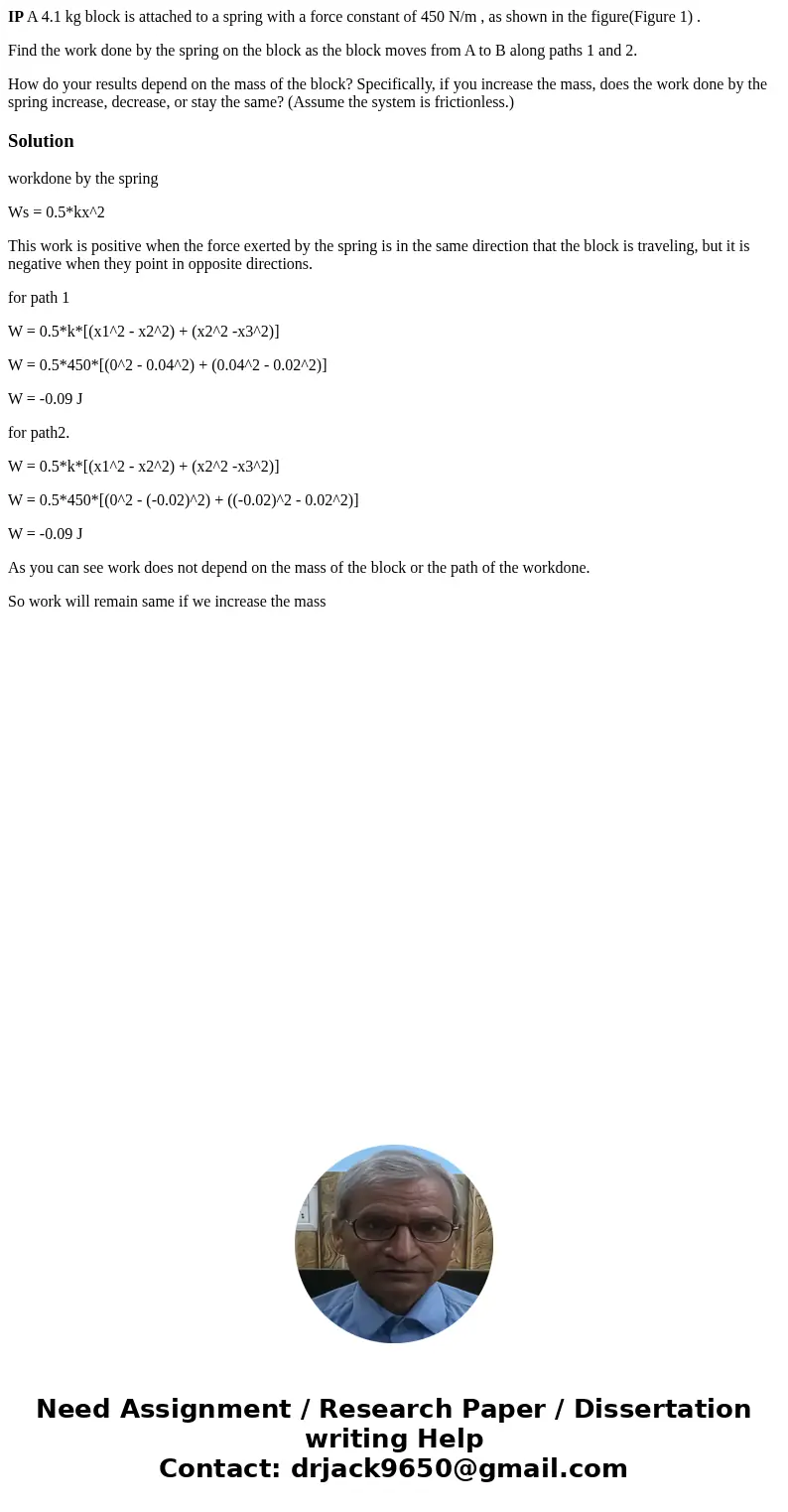IP A 41 kg block is attached to a spring with a force consta
IP A 4.1 kg block is attached to a spring with a force constant of 450 N/m , as shown in the figure(Figure 1) .
Find the work done by the spring on the block as the block moves from A to B along paths 1 and 2.
How do your results depend on the mass of the block? Specifically, if you increase the mass, does the work done by the spring increase, decrease, or stay the same? (Assume the system is frictionless.)
Solution
workdone by the spring
Ws = 0.5*kx^2
This work is positive when the force exerted by the spring is in the same direction that the block is traveling, but it is negative when they point in opposite directions.
for path 1
W = 0.5*k*[(x1^2 - x2^2) + (x2^2 -x3^2)]
W = 0.5*450*[(0^2 - 0.04^2) + (0.04^2 - 0.02^2)]
W = -0.09 J
for path2.
W = 0.5*k*[(x1^2 - x2^2) + (x2^2 -x3^2)]
W = 0.5*450*[(0^2 - (-0.02)^2) + ((-0.02)^2 - 0.02^2)]
W = -0.09 J
As you can see work does not depend on the mass of the block or the path of the workdone.
So work will remain same if we increase the mass

 Homework Sourse
Homework Sourse